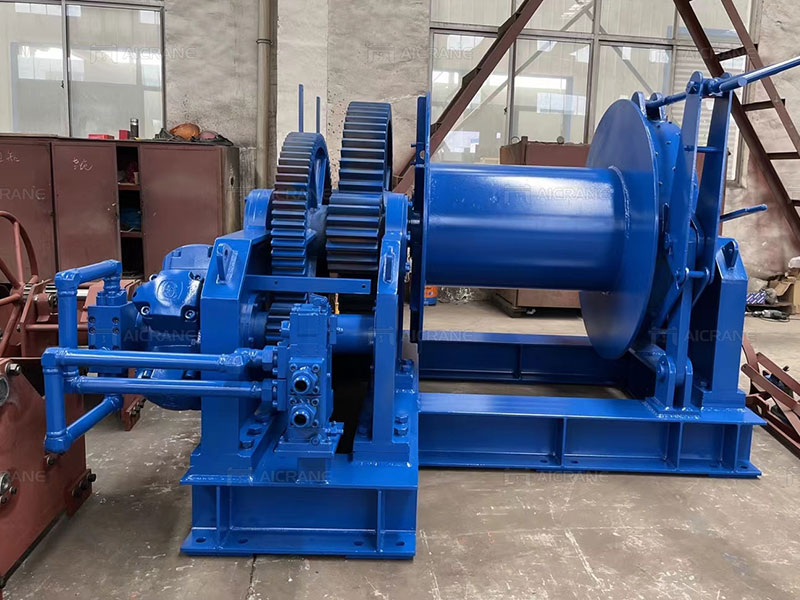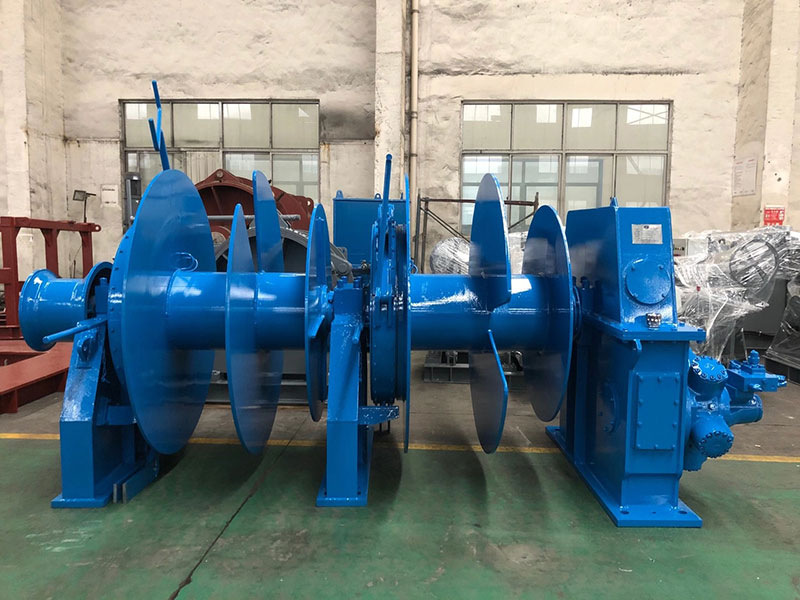Hydraulic towing winches play a crucial role in various industries, from maritime operations to heavy-duty towing on land. These powerful devices are designed to handle substantial loads efficiently and safely. In this article, we will delve into the working principles of hydraulic towing winches, exploring their components, operation, and applications.
Understanding the Basics
Before diving into the intricate workings of hydraulic towing winches, it’s essential to grasp the basic components and functions of these machines. At its core, a hydraulic towing winch is a mechanical device used for the controlled winding and unwinding of cables or ropes. It’s commonly employed for tasks such as towing ships, moving heavy equipment, and even rescuing vehicles trapped in precarious situations.

Key Components of a Hydraulic Towing Winch
Hydraulic Motor: The heart of a hydraulic towing winch is the hydraulic motor, which converts hydraulic pressure into mechanical power. This motor drives the winch’s drum, allowing it to wind or unwind the cable as needed.
Drum: The drum is a cylindrical component around which the cable or rope is wound. The size and capacity of the drum determine the winch’s pulling and lifting capabilities.
Cable or Rope: A strong and durable cable or rope is wound around the drum. The choice of cable material and size depends on the specific application and load requirements.
Hydraulic Pump: To generate hydraulic pressure, a hydraulic towing winch relies on a hydraulic pump. The pump is typically powered by an external power source, such as an engine or an electric motor.
Control System: The winch’s control system allows operators to manipulate the winch’s functions, such as winding, unwinding, and controlling the tension of the cable or rope.
Working Principle of Hydraulic Towing Winches
Hydraulic Pressure Generation: The process begins with the hydraulic pump pressurizing hydraulic fluid (usually oil) within the system. This pressurized fluid is then sent to the hydraulic motor.
Hydraulic Motor Operation: The hydraulic motor receives the high-pressure hydraulic fluid and converts it into mechanical power. This power is used to rotate the winch drum.
Cable Winding or Unwinding: As the drum turns, the cable or rope wound around it is either wound in (winched) or let out (unwound) as needed. The direction of rotation and speed of the drum are controlled by the operator through the winch’s control system.
Tension Control: Tension control mechanisms, such as brakes or clutches, can be incorporated into the towing winch system to maintain the desired tension on the cable or rope during operations.

Applications of Hydraulic Towing Winches
Maritime Industry: Hydraulic towing winches are extensively used in the maritime industry for ship towing and anchoring operations. They help vessels maneuver through harbors, navigate tight waterways, and perform docking and undocking maneuvers.
Offshore Oil and Gas: In offshore oil and gas exploration and production, hydraulic towing winches are employed for tasks such as mooring oil rigs, positioning subsea equipment, and recovering or deploying heavy machinery.
Construction and Mining: Hydraulic winches are indispensable in construction and mining operations for tasks like moving heavy construction equipment, lifting materials, and pulling vehicles or machinery out of challenging terrains.
Transportation and Recovery: Tow trucks and recovery vehicles often rely on hydraulic towing winches to rescue stranded or damaged vehicles and haul them to safety.
Forestry and Logging: Hydraulic winches are used in forestry and logging to move large logs, clear obstacles, and assist in various wood harvesting operations.
Advantages of Hydraulic Towing Winches
Power and Efficiency: Hydraulic winches provide high levels of power and efficiency, making them suitable for heavy-duty applications.
Precise Control: Operators can precisely control the speed and direction of the marine winch, ensuring safe and accurate operations.
Durability: Hydraulic winches are known for their durability and ability to withstand harsh environmental conditions.
Versatility: These winches are versatile and can be adapted to various applications with the right accessories and configurations.
Safety: The ability to control tension and speed enhances safety during towing and lifting operations.
Conclusion
Hydraulic towing winches are engineering marvels that have revolutionized industries requiring controlled cable winding and unwinding. Their intricate working principles, driven by hydraulic pressure, enable the safe and efficient handling of heavy loads in diverse environments. From maritime operations to construction and recovery tasks, hydraulic towing winches continue to play a vital role in various industries, contributing to increased productivity and safety standards. Understanding their inner workings is essential for operators and professionals involved in these industries, as it facilitates the effective and safe utilization of this powerful equipment.